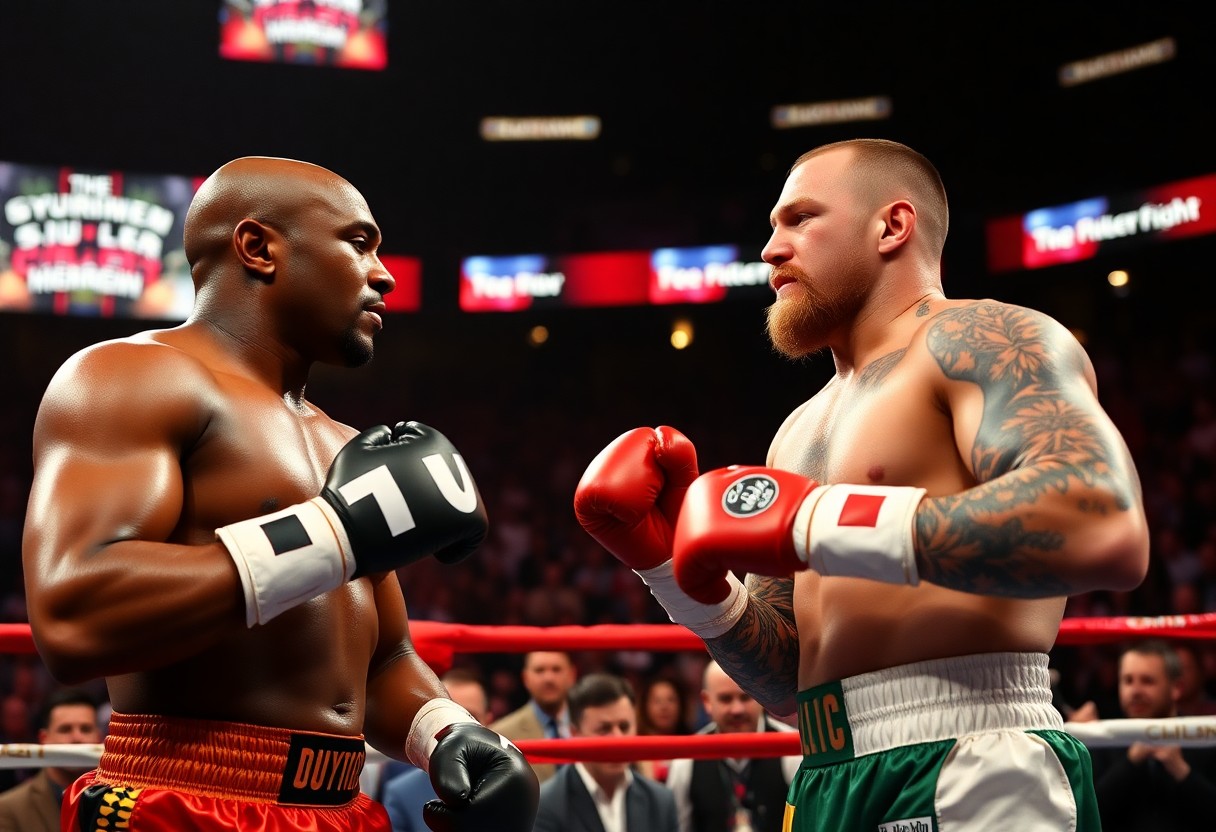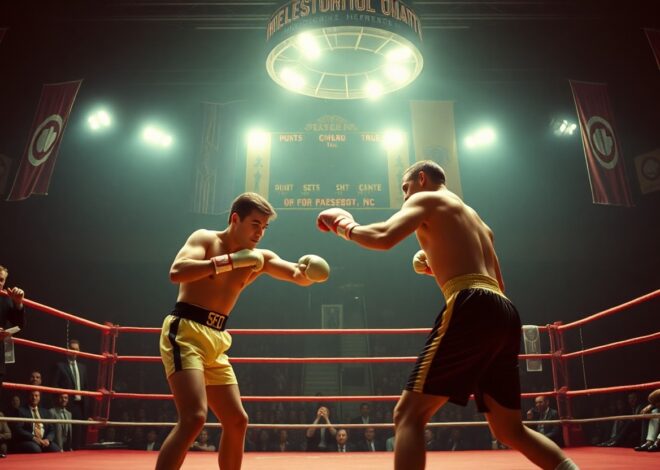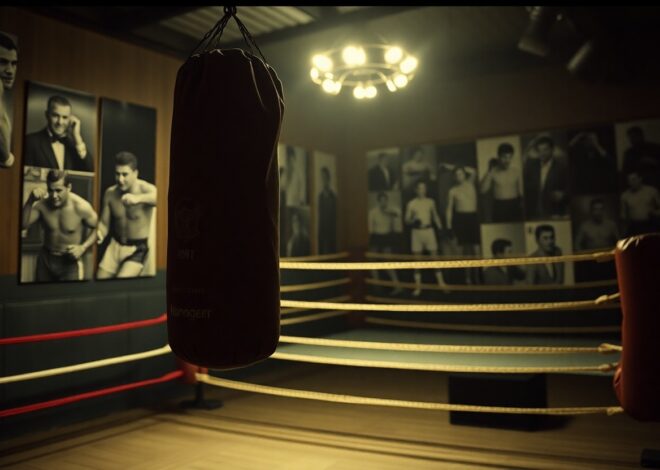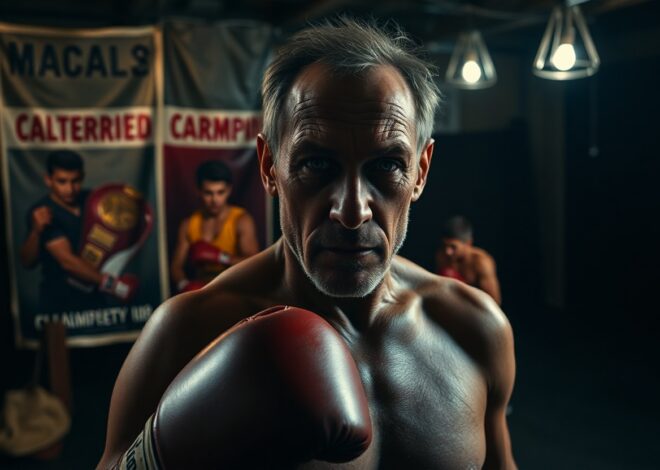
The Legacy Of Floyd Mayweather Vs. Conor McGregor: What Their Superfight Meant For Combat Sports?
There’s an undeniable impact left by the 2017 superfight between Floyd Mayweather and Conor McGregor, which transcended the traditional boundaries of boxing and mixed martial arts. This historic event not only attracted a record-breaking 4.3 million pay-per-view buys, but it also ignited a global conversation about the collaboration between different combat sports. The fight showcased the seamless blend of athletic prowess and marketing genius, influencing how fighters approach their careers today and altering fan engagement in profound ways.
The Build-Up to the Superfight
Origins of the Rivalry
The rivalry between Floyd Mayweather and Conor McGregor began with a mix of respect and disdain, fueled by their contrasting personalities and fighting styles. Mayweather, known for his unbeaten record and defensive prowess, represented traditional boxing, while McGregor, with his brash demeanor and striking power, brought a fresh, unorthodox flair from the world of MMA. Their first face-offs on social media laid the groundwork for a conflict that captivated fans globally, magnified by incendiary comments and personal jabs in interviews.
Promoting the Event
The promotion of the Mayweather vs. McGregor bout reached unprecedented levels in combat sports history, combining elements from both boxing and MMA. The event’s marketing broke records through an extensive global media tour, showcasing the fighters’ personalities and rivalrous antics. With tickets selling out quickly and pay-per-view sales surpassing 4.3 million, the event estimated to generate over $600 million in revenue highlighted the enormous financial potential of crossover events in combat sports.
The media tour was instrumental, featuring stops in multiple cities where both fighters unleashed their trademark trash talk, drawing enormous crowds and global attention. Press conferences turned into theatrical performances with McGregor’s flamboyant suits and Mayweather’s showmanship, captivating millions. The fight’s promotional campaign employed innovative tactics, harnessing social media platforms and traditional advertising, ensuring that awareness reached unprecedented levels. This synergy not only engaged existing fans but also attracted casual viewers, radically altering how future events would be marketed.
The Fight: A Clash of Styles
The showdown between Floyd Mayweather and Conor McGregor showcased not only their divergent backgrounds but also the strategic elements of their respective sports. Mayweather, renowned for his defensive prowess and tactical acumen in boxing, faced McGregor, a mixed martial artist celebrated for his unorthodox striking and adaptability. This unique clash promised to spark debate about the merits of boxing against mixed martial arts, with each fighter bringing a distinct set of skills to the ring.
Boxing vs. Mixed Martial Arts
Boxing emphasizes footwork, head movement, and precise punches, while mixed martial arts blends various martial disciplines, focusing on striking and grappling techniques. Mayweather’s approach revolved around impeccable defense, counterpunching, and an extensive understanding of boxing rhythm, contrasting sharply with McGregor’s unpredictable fighting style and ability to utilize a wide range of combat techniques. This fundamental difference not only defined their fighting strategies but also captivated fans worldwide, fueling discussions on which discipline reigns supreme.
Key Moments in the Match
The match brimmed with memorable highlights, notably McGregor’s surprising early success, where he landed significant punches that challenged Mayweather’s typical dominance. However, as the rounds progressed, Mayweather’s legendary adjustments came into play, showcasing his ability to read and exploit McGregor’s openings. The bout culminated in the decisive tenth round, leading to a TKO victory for Mayweather.
McGregor started strong, showcasing his left hand’s power in the opening rounds and keeping the fight competitive, a testament to his striking abilities. Mayweather, however, demonstrated his signature style by gradually controlling the pace and distance, avoiding damage while accumulating points. By the later rounds, McGregor began to fatigue, and Mayweather seized the opportunity, landing a flurry of punches before referee Robert Byrd stepped in to halt the fight. This pivotal shift underlines Mayweather’s exceptional capacity to adapt and underscores the contrasting endurance levels between boxing and MMA athletes.
Financial Impact on Combat Sports
The financial implications of the Mayweather vs. McGregor fight reshaped the landscape of combat sports, setting new benchmarks for earnings across the board. Fighters and promoters now view cross-discipline matchups as lucrative opportunities, influencing their strategies and negotiation tactics indefinitely.
Revenue Generated
This highly publicized bout generated an estimated $600 million in total revenue, with each fighter taking home record-breaking paychecks. Such financial success indicated a demand for future crossover events in combat sports, highlighting the potential for significant profits.
Pay-Per-View Records
Securing a spot in history, the fight boasted over 4.3 million pay-per-view buys in North America, eclipsing previous records. This unprecedented viewership solidified the viability of megafights, changing the business model within both boxing and MMA.
The fight’s pay-per-view milestone not only reflected the immense popularity of both fighters but also signified a shift in audience engagement strategies. By tapping into different fan bases, Mayweather and McGregor demonstrated how promotional efforts could transcend traditional boundaries, enticing casual viewers and maximizing revenue streams. This success has encouraged promoters to seek out more unconventional matchups, further blurring the lines between sports disciplines in the pursuit of profit.
Legacy and Influence on Fighters
The bout between Floyd Mayweather and Conor McGregor set a new standard in combat sports, blurring the lines between boxing and mixed martial arts. Both fighters showcased not only their skills but also the volatile intersection of sport and entertainment. This fight highlighted that success extends beyond technique; it encompasses personality, marketing, and social media presence. As a result, emerging fighters are increasingly recognizing the value of personal branding, shaping their careers in multifaceted ways that honor the legacy left by Mayweather and McGregor.
Impact on Future Matchups
Future matchups have been profoundly influenced by the Mayweather-McGregor spectacle. Promotions are more inclined to pursue high-profile cross-discipline bouts that promise revenue and fan engagement. Fighters are now exploring different martial arts disciplines, leading to increased versatility and the potential for more matchups that excite audiences. Pay-per-view sales and gate revenue from events featuring diverse fight styles have surged, leading promoters to reconsider the traditional matchmaking approach to ensure maximum profitability.
Inspiration for Upcoming Athletes
Mayweather and McGregor have become emblematic figures for aspiring athletes across combat sports, particularly for their high-risk, high-reward mindset. Their shared narrative of overcoming challenges to achieve greatness resonates deeply, motivating many to pursue their goals with relentless passion. The fight showcased how visionary athletes can transcend their sports, leading to increased ambition among newcomers eager to emulate their success.
As role models, Mayweather and McGregor inspire upcoming athletes to embrace both skill and showmanship. They demonstrate that the fight goes beyond the ring and octagon; it involves building a personal brand and engaging with fans through social media. Their achievements in negotiating lucrative contracts have opened doors for younger fighters, indicating that success is as much about marketability as it is about athletic prowess. The duo’s ability to manipulate public interest and media narratives serves as a template for future generations aiming to capture the spotlight and forge their paths in modern combat sports.
Public Perception and Media Coverage
The Mayweather vs. McGregor fight garnered an unprecedented level of public attention, becoming a focal point for discussions on the future of combat sports. The clash generated a wave of intrigue, pitting traditional boxing against the rising popularity of mixed martial arts. Social media buzzed with reactions, while sports networks and mainstream outlets dedicated extensive coverage, fueling an international spectacle that reached audiences beyond the typical fight fanbase.
Fan Reactions
Fans exhibited polarized reactions, with some embracing the spectacle as a celebration of combat sports while others criticized it as a sideshow. The fight drew over 4.3 million pay-per-view buys, demonstrating immense interest but also revealing divisions among purists and casual viewers. Engaging debates erupted across social platforms, highlighting differing opinions on whether the matchup elevated or undermined the integrity of boxing.
Media Analysis
Media analysis of the fight emphasized its cultural significance, blending elements of entertainment and sport. Journalists hailed it as a game-changing event, with many arguing it reshaped the landscape of combat sports. The narratives constructed around both fighters played a significant role, influencing public sentiment and engagement levels.
Numerous outlets conducted in-depth analyses, examining the marketing tactics employed and the massive revenue generated, which totaled approximately $600 million. This fight marked a paradigm shift, as traditional sports journalism intersected with entertainment coverage, paving the way for future cross-promotional events. Commentators dissected the implications of celebrity involvement in sports, foreshadowing a trend where combat sports fights became major entertainment spectacles, rather than just athletic contests.
The Evolution of Combat Sports Post-Fight
The aftermath of the Mayweather vs. McGregor superfight led to significant transformations within combat sports. As organizations sought to capitalize on its success, they ushered in diverse promotional methods and a surge in high-profile cross-discipline matchups. The fight not only showcased the financial potential of combining boxing and MMA but also ignited discussions on how combat sports can continue to evolve in a rapidly changing landscape.
Changes in Promotion Strategies
Promotional strategies post-fight shifted dramatically, with fighters now encouraged to embrace larger-than-life personas to attract fans. Organizations like the UFC and boxing promoters began incorporating more theatrical elements, often utilizing social media theatrics to create buzz around upcoming fights. This focus on personality and narrative, rather than just athleticism, became imperative for generating interest and driving pay-per-view sales.
Growth of Cross-Discipline Fights
The Mayweather vs. McGregor matchup sparked an increased appetite for cross-discipline fights, leading to several high-profile events that blurred the lines between boxing and MMA. Fighters from both realms have shown interest in challenging opponents from different sports, creating an exciting landscape filled with possibilities. This trend not only attracts diverse fanbases but also heightens the competitiveness between various fighting disciplines, contributing to the overall growth of combat sports.
Following the spectacle of Mayweather vs. McGregor, notable cross-discipline bouts became more commonplace, such as the match between Anderson Silva and Julio César Chávez Jr. in boxing, and the rise of grapplers transitioning into boxing arenas. Reports suggest that more than 30% of MMA fighters are now considering boxing bouts, illustrating an undeniable shift in athlete engagement across codes. This trend provides fighters with alternative revenue streams while capturing the imagination of fans eager for unique matchups, ultimately shaping a new era within combat sports.
Conclusion
Following this historic superfight, the legacies of Floyd Mayweather and Conor McGregor have significantly reshaped the landscape of combat sports. Their matchup transcended traditional boxing and MMA boundaries, showcasing the potential for cross-discipline engagement and elevating athlete visibility. This event not only generated unprecedented financial success but also inspired a new generation of fighters to explore mixed-fighting techniques and promotional strategies. Ultimately, Mayweather vs. McGregor served as a landmark moment, enhancing the appeal of combat sports and paving the way for future high-profile crossover bouts.
FAQ
Q: What was the significance of the Mayweather vs. McGregor fight for boxing?
A: The fight generated unprecedented attention for boxing, drawing casual viewers and increasing interest in the sport. It showcased the potential for crossover bouts, blending different fight disciplines, and opened doors for future events featuring fighters from various backgrounds.
Q: How did the superfight impact MMA and UFC?
A: The event elevated the status of MMA fighters, especially in terms of negotiating power and marketability. It demonstrated that an MMA fighter could compete against a boxing champion in a different sport, thereby challenging perceptions and enhancing the legitimacy of MMA within combat sports.
Q: What legacy did Mayweather and McGregor leave on the combat sports landscape?
A: Their bout created a template for lucrative crossover fights, highlighting the viability of such matchups to promoters and fighters alike. Both athletes became icons, influencing future generations of fighters to explore opportunities beyond their primary disciplines, fostering innovation and collaboration in combat sports.



